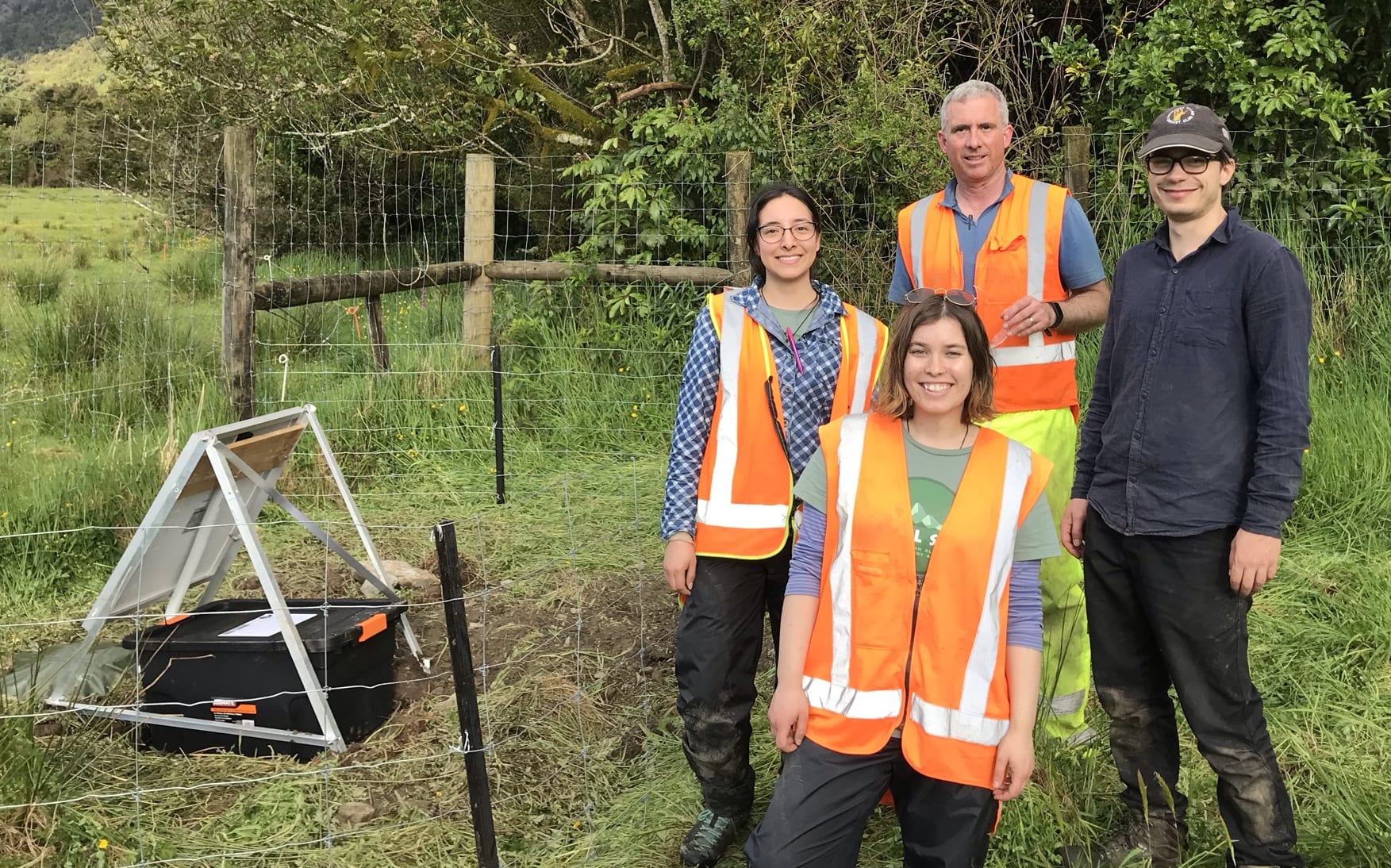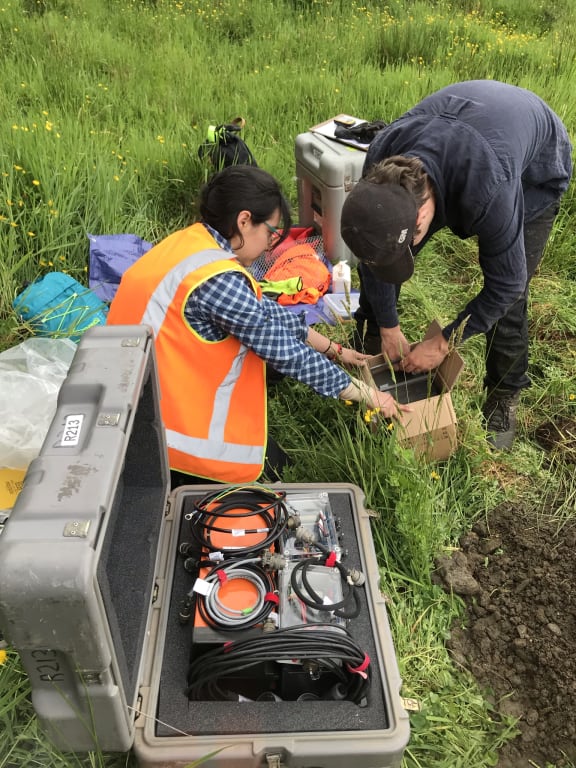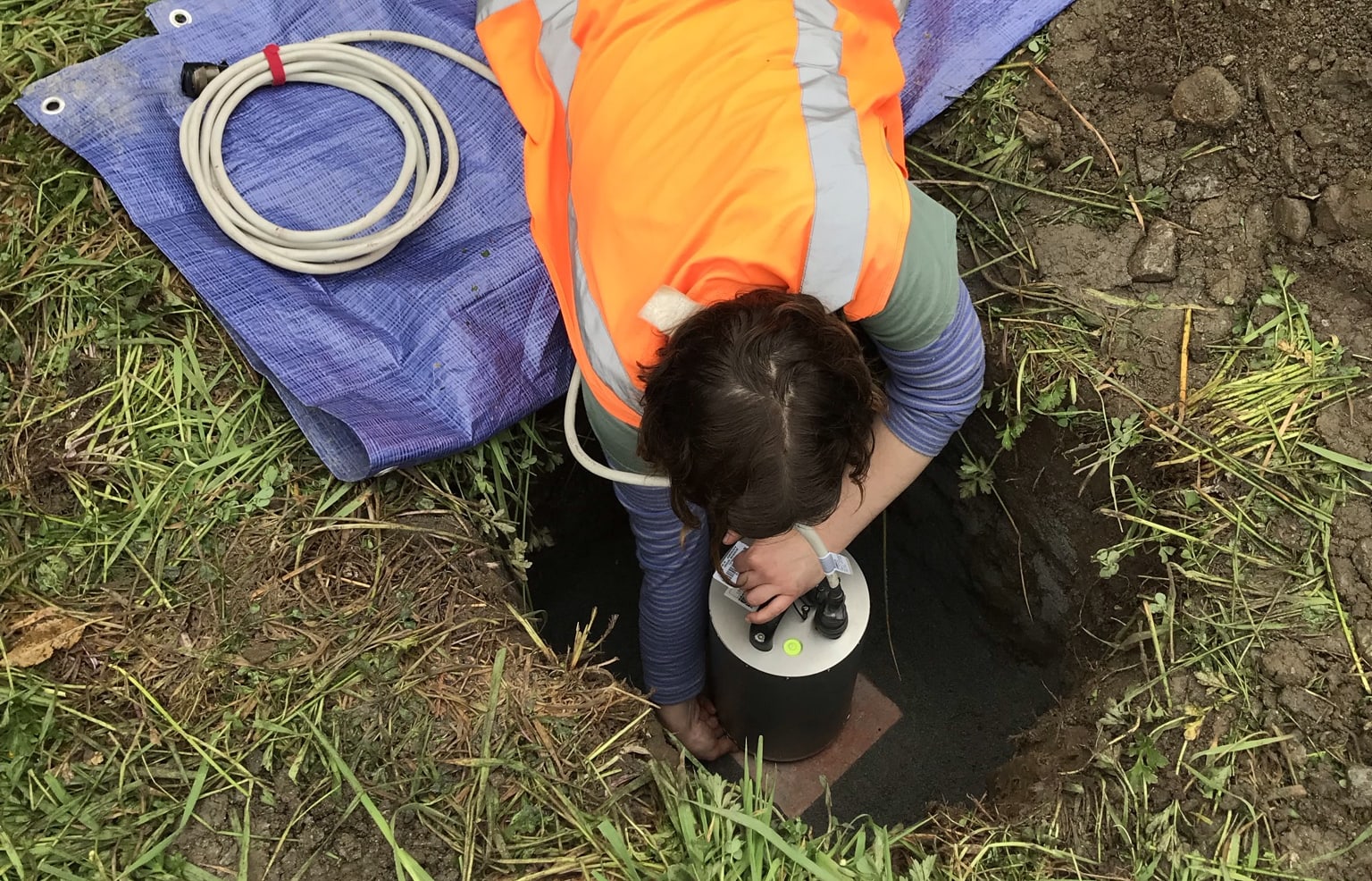Standing in the last back field of a deer farm near Whataroa on the South Island's West Coast, orange high-vis vest on, shovel in hand, Professor John Townend is looking for the perfect spot - not too wet, not too stony, with a good view of the sun. A good space to dig a hole and bury something that may help us learn what is to come in the next big earthquake.

The completed installation with team (L-R): Olivia Pita Sllim, Ash Matheson, Prof John Townend and Dr. Finn Illsley-Kemp. Photo: RNZ / Claire Concannon
Follow Our Changing World on Apple Podcasts, Spotify, Stitcher, iHeartRADIO, Google Podcasts, RadioPublic or wherever you listen to your podcasts.

Olivia & Finn prepare the electronic components of the sensor. Photo: RNZ / Claire Concannon
This is to be the site of one of the South Island Long Skinny Array (SALSA) seismic sensors - a string of 55 sensors spaced 10km apart along 450km of the Alpine Fault between Maruia and Milford Sound.
The Alpine Fault is the on-land boundary between the Pacific and Australian plates, running almost the length of the South Island. Paleoseismology research has shown that the fault has a remarkably regular history of producing large earthquakes; one about every 300 years. The last large earthquake was in 1717 - 304 years ago, making it likely that the next severe earthquake on the Alpine Fault will occur within our lifetimes.
The aim of SALSA is to increase our understanding of what will happen as a result of that earthquake. The seismic sensors John and his team are using are able to detect a wide range of frequencies of seismic waves, including the background hum, or ambient seismic noise, that is produced when ocean waves hit the land.
Previously, scientists would have deleted this 'noise' from their data, or avoided capturing it in the first place. However, recent advances have shown that collecting this type of data over a long period and running analysis on it can give insight into how seismic waves will move along the fault and affect ground shaking further afield. It allows scientists to create 'virtual' earthquakes - they can model how the energy will transfer without having to wait for an actual earthquake to occur.

Ash Matheson orientates the sensor in the hole so that it faces North. Photo: RNZ / Claire Concannon
First though the sensors have to be installed, a mammoth task in itself as the team must contend with the challenges that the Southern Alps present - different terrain, difficult access and changeable weather. The full team of 11 people are working together over two and a half weeks to fit as many sensors as possible. Claire Concannon joins a group as they install one sensor to learn all about how and why they are doing it.
Listen to more episodes about earthquakes and earthquake science by visiting our collection.
The SALSA project is funded by the Marsden Fund of the Royal Society Te Apārangi and involves scientists and graduate students from Victoria University of Wellington—Te Herenga Waka, SeismoCity Ltd., GNS Science, the University of Auckland, and the universities of Edinburgh, Tokyo and Washington. The project is led by Professor John Townend of Victoria University of Wellington and Dr Caroline Holden of SeismoCity Ltd. The project uses equipment, and is grateful for technical and logistical expertise, from the Portable Array Seismic Studies of the Continental Lithosphere (PASSCAL) Instrument Center in Socorro, New Mexico.
The SALSA team very gratefully acknowledges the support and encouragement of Te Rūnaka o Makaawhio and Te Rūnanga o Ngāti Waewae, the Department of Conservation, Fox and Franz Heliservices, Aratuna Freighters, Out There Learning, and landowners throughout the region. Kia ora mai tātou. Ngā mihi nui ki a tātou.


